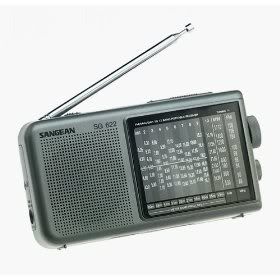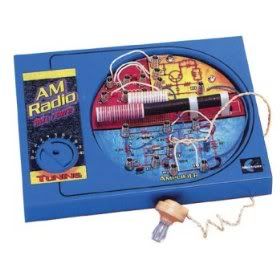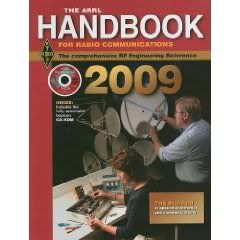





|
|
|
|
June 04, 2009
Sunspots and Radio Propagation
You may have noticed that I added a current radio propagation and solar statistics chart to the sidebar at Power and Control. The chart is refreshed every 3 hours, but you will need to refresh the page that has it to see the latest. If you want one for your blog or webpage you can click on the chart or the link in this sentence. When solar activity starts rising propagation on the higher frequency bands will improve. There will more skip. That is the radio waves can bounce from the ground to the ionosphere to the ground more than once without the power being reduced to undetectable levels. If short wave radio interests you this is a good starter radio. You will need an to buy an AC adapter to reduce spending on batteries.  Here is a cute short wave radio kit. It will take you back to the old days of radio with modern components. It is all solid state. Because of the single tuning knob with no vernier the tuning is apt to be a bit twitchy. Good for the kids as a starter or just for fun. But the price is right. $15 plus shipping. You will need an antenna for weaker signals - but that can be just a few tens of feet of copper wire strung out where convenient. In the old days you could just clip the antenna terminal to the stop of a rotary phone. Gone are the days. Of course with a better antenna you will get better reception.  If you want to build your own outdoor antenna this book is a good place to start: And for a moderately priced top end radio receiver:  This book has a good section on radio propagation and a number of other topics including antennas, receivers, and transmitters. A good starting point for the beginning experimenter or the budding engineer interested in radio.  Ah, the romance of short wave radio. posted by Simon on 06.04.09 at 11:38 AM
Comments
That is the radio waves can bounce from the ground to the ionosphere to the ground more than once without the power being reduced to undetectable levels. There are two effects, bouncing and attenuation. Low frequencies always bounce, but are attenuated in the daylight by exciting charges in the denser atmosphere which then collide with neutral particles, soaking up energy. At night these charges aren't there and you can hear AM radio across the country. Higher frequencies don't bounce at night because they're above the plasma frequency of the charged upper ionosphere (mumbles about sine of angle of propagation) and go right through. The ionosphere needs more charges to raise its natural resonance frequency, which happens when the sun does its stuff. On the other hand high frequencies don't attenuate much in the day because they don't move the charges in the lower atmosphere far enough to collide with neutral particles. Much of the joy of AM band listening has been wiped out by the FCC allowing HD radio (IBOC) down there, which puts a 24/7 hiss on both adjacent channels, and all you hear is this hiss now on every frequency. rhhardin · June 5, 2009 04:03 AM Post a comment
You may use basic HTML for formatting.
|
|
June 2009
WORLD-WIDE CALENDAR
Search the Site
E-mail
Classics To Go
Archives
June 2009
May 2009 April 2009 March 2009 February 2009 January 2009 December 2008 November 2008 October 2008 September 2008 August 2008 July 2008 June 2008 May 2008 April 2008 March 2008 February 2008 January 2008 December 2007 November 2007 October 2007 September 2007 August 2007 July 2007 June 2007 May 2007 April 2007 March 2007 February 2007 January 2007 December 2006 November 2006 October 2006 September 2006 August 2006 July 2006 June 2006 May 2006 April 2006 March 2006 February 2006 January 2006 December 2005 November 2005 October 2005 September 2005 August 2005 July 2005 June 2005 May 2005 April 2005 March 2005 February 2005 January 2005 December 2004 November 2004 October 2004 September 2004 August 2004 July 2004 June 2004 May 2004 April 2004 March 2004 February 2004 January 2004 December 2003 November 2003 October 2003 September 2003 August 2003 July 2003 June 2003 May 2003 May 2002 AB 1634 MBAPBSAAGOP Skepticism See more archives here Old (Blogspot) archives
Recent Entries
• It's An Absolute Disgrace
• The Seeds Of Stupidity • Remember D-Day • Newton's Cradle • Taxes Send Jobs Offshore • The law is the law! • A teaching moment? • You Can't Do It At Random • In debt to Islam? For Western thought? • David Carradine Is Dead
Links
Site Credits
|
|
Ah. Remembering the late nights in my early years listening from the deep south to Radio Canada International, the BBC, Radio Moscow and others.